Coffee Farm Lists
-
Costa Rican Coffee Development History Costa Rican Coffee Origin Costa Rican Tarazu Diamond

Coffee is an important economic source of Costa Rica. It was introduced in 1808 and has been cultivated for 200 years. Costa Rica has 1x3 population invested in coffee-related industries. Colombians say that coffee has changed the country and enjoyed a rich environment, and coffee has indeed made an outstanding contribution. Although Costa Rica ranks third from the bottom in terms of land area in Central America, its economic environment is better than that of Central America.
2016-03-30 Costa Rica coffee development history origin Tara diamonds -
China Coffee Network recommends Costa Rica Fenghuang Manor Red Honey to treat SHB Coffee cooked beans
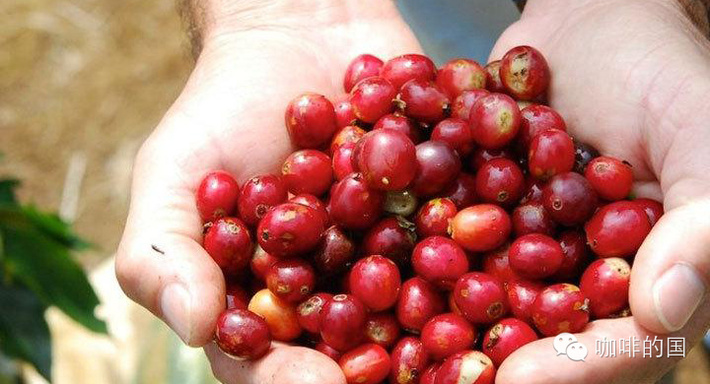
Costa Rican Coffee Editor Costa Rican Coffee is produced in the Republic of Costa Rica (The Republic of Costa Rica) in the south of Central America. Its quality is similar to that of Colombian coffee and is suitable for blending mixed coffee. The coffee beans produced at the high latitudes of Costa Rica are famous in the world, full-bodied, mild in taste, but extremely sour.
2016-03-30 China Coffee recommendation Costa Rica Fire Phoenix Manor Red Honey processing SH -
China Coffee Network recommends Costa Rica's Tarazu Diamond Villa Park to wash SHB Kaddura American Cafe.

Costa Rican coffee plants were imported from Cuba in 1779 and exported for the first time in 1820. There are now about 32000 coffee farmers, with an average of less than 10000 yuan per farmer. Costa Rica has a population of 410 million (2006), an active coffee planting area of 82500 square meters, an annual output of 1.7 million bags (60kgs per bag), and an annual consumption of 38 million bags in China.
2016-03-30 China Coffee recommendation Costa Rica Tara Pearl Diamond Stone Mountain Manor Water washing -
Arabica Variety Rose Summer Hope Manor in Cauca Valley of Colombia Sun treatment of Geisha / Rose Summer

Ten years ago, most coffee farms in Colombia went all out to sprint production, and when the government advocated the cultivation of high-yield beans with strong disease resistance and discouraged good flavor but low yield, it was hoped that the manor would resolutely embark on the long road of fine coffee. The opportunity that the manor was expected to see at that time was Geisha (also known as a geisha). The Emerald Manor of Panama has rediscovered the rose summer in the garden.
2016-03-30 Rabbi Variety Rosa Columbia Cauca Valley Hope Manor Sun Office -
Costa Rican Coffee House-Diamond Hill Coffee House Costa Rican Coffee House

Costa Rican coffee cultivation was introduced from Cuba in 1779 and exported for the first time in 1820. There are about 32,000 coffee farmers in Costa Rica, with an average cultivation area of less than one hectare (10,000 m2) per farmer. Costa Rica has a population of 4.1 million (2006), coffee cultivation area of 82,500 hectares, annual production of 1.7 million bags (60kgs per bag), annual domestic consumption of 380,000 bags, flat
2016-03-30 Costa Rica Coffee Manor Introduction Rock Mountain Taste -
How to choose coffee beans choose fresh coffee beans Columbia Santa Rita washing coffee beans
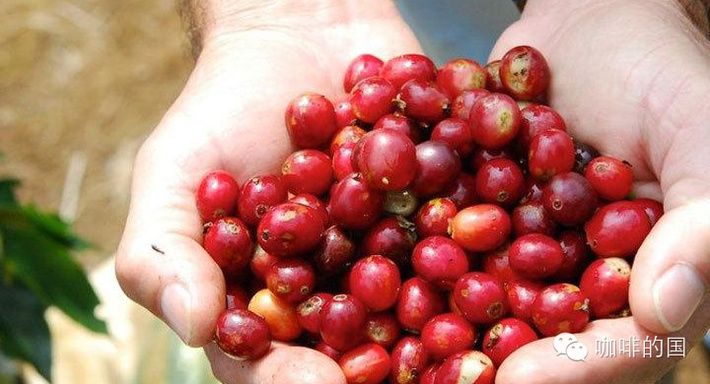
The history of coffee cultivation in Colombia can be traced back to the Spanish colonial era in the 16th century, and there are many theories about the history of coffee in Colombia: one: it is said to come from the island of Haiti in the Caribbean and from El Salvador in Central America. Second: in 1808, a priest introduced coffee beans to Colombia for the first time from the French Antilles via Venezuela. One of them
2016-03-30 How to choose coffee beans fresh Columbia Santa Rita washing treatment -
Mocha Coffee Columbia Coffee Triple Crown King wants manor honey to treat rare varieties of mocha beans

The word Mocha has many meanings. Around 600 AD, the first coffee bean far from its hometown of Ethiopia took root in Yemen on the other side of the Red Sea, and the coffee industry began all over the world. Since the most important export port of early Yemeni coffee was the port of Mocha, the coffee produced in Yemen was also called mocha beans, which were small and fragrant, with strong sour and mellow taste and sweet taste.
2016-03-30 Mocha Coffee Colombia Triple Crown Wang Hope Hope Manor processing rare -
Grade A water washing treatment of pearl beans at PNG Kimmel Manor, Papua New Guinea, Indonesia

Located in the east of the Indonesian archipelago, Papua New Guinea, which is dominated by highlands, has a pattern of large manors / farms and small farmers, growing a variety of coffee varieties. The flavor of coffee in Papua New Guinea is very different from that of coffee from other Asian regions such as Indonesia, South Asia, India or the Pacific Islands; compared to Indonesian beans, which are mostly semi-washed (wet peeled).
2016-03-30 Indonesia Papua New Guinea PNG Mayer Manor washing treatment -
Asia China Fine Coffee Bean Origin Indonesia Bali Coffee Fine

China's coffee-producing areas are mainly in Hainan, Yunnan, Guangdong and Taiwan. Hainan Island north, south of Yunnan Province, located between 15 degrees north latitude to the Tropic of Cancer, its coffee is strong but not bitter, fragrant but not strong, very unique. And with a little fruit flavor, coffee is the top grade, international praise. Taiwan is located in the subtropical zone, mountainous territory, and there is a clear rainy season, coffee is not bad
2016-03-30 Asia China Fine Coffee Bean Origin Introduction Indonesia Bali Coffee -
Special treatment method of Diamond Manor of Huilan Plateau in Huilan Plateau producing area of Yellow bourbon Coffee in Colombia
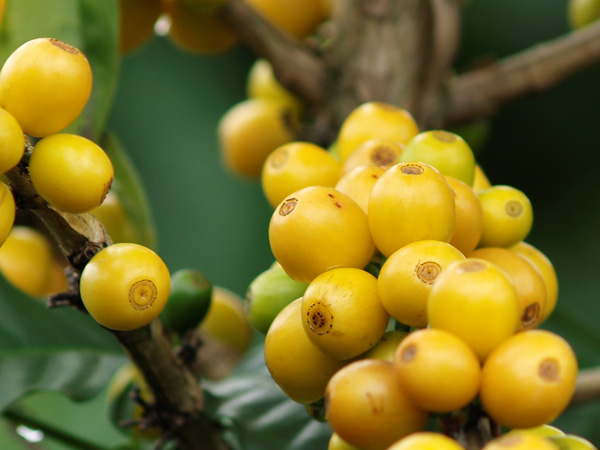
Colombia's boutique bean producing areas are mainly in the south, more than 1500 meters above sea level, including San Augustin, Huila in Huilan province, Popayan, Cauca in Cauca province, Nari ñ o province, and Tolima province, all of which have delicate sour and raspberry aromas, caramel aromas and full sweetness. Bourbon species native to the Indian Ocean
2016-03-30 Colombia Yellow bourbon quality Coffee beans Huilan producing area Plateau Diamond Manor -
Introduction of Costa Rican boutique coffee Costa Rican boutique coffee taste Costa Rica
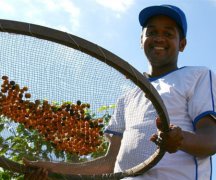
The coffee beans produced in the high latitudes of Costa Rica are famous in the world, full-bodied, mild in taste, but extremely sour. The coffee beans here have been carefully processed, which is why there is high-quality coffee. Tarasu, located in the south of SanJos, the capital of Costa Rica, is one of the most valued coffee growers in the country. Tarasu (Tarrazu) is one of the major players in the world
2016-03-30 Costa Rica boutique coffee introduction taste flavor Costa Dali -
Introduction of Panamanian Valentine Coffee Manor introduction of boutique coffee beans in Panamanian water-washed Rosa coffee producing area
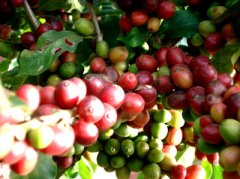
Affectionate Manor, which covers an area of about 12.5ha, is a miniature estate in Panama. According to the owner, the 8.5ha varieties range from the common typica, Red Catuai and Pacamara. After 2008, a few areas began to grow Geisha coffee, which now accounts for nearly half of the total.
2016-03-30 Panama Love Saint Coffee Manor introduction Water washing Rose Summer producing area boutique -
Costa Rica Fire Phoenix Coffee Manor introduces Black Honey Violet Coffee beans Honey Coffee beans
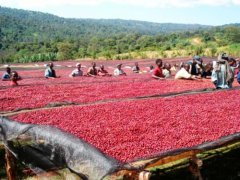
Costa Rica Fire Phoenix Manor Black Honey Violet here first talk about the honey treatment of coffee beans. Black honey treatment (Dark Honey) is currently the most complex and difficult method of raw bean treatment, in which the most special is to completely retain 100% of the mucus that originally belongs to the pulp of coffee beans, and then go through natural fermentation, and finally absorb the full energy of sunlight in the process of sun drying.
2016-03-30 Costa Rica Fire Phoenix Coffee Manor introduction Violet Coffee beans Costa -
Casalouis Coffee Manor in Panama introduces Panamanian washed boutique coffee beans Panamanian coffee

Coffee was introduced into Panama in 1780, when Europeans introduced the first Typica tree species. After that, this mysterious and strange drink conquered the senses of Panamanians, and the local people began to grow it widely. Casa Ruiz, S.A., Panama. Manor, founded in 1920, is located in the Boquete producing area of Baru Volcano Volcano.
2016-03-30 Bana Makai Salu Eise Coffee Manor introduction Panama washing boutique -
Introduction of El Salvador boutique coffee taste flavor El Salvador coffee

Salvadoran coffee refers to the coffee produced in the small South American country of El Salvador, where the coffee body is light, aromatic, pure, slightly sour, the flavor is extremely balanced, is a specialty of Central America. With sour, bitter, sweet and other taste characteristics, the best baking degree is moderate, deep. Coffee Origin in the early 1990s, guerrilla warfare greatly damaged the country's national economy and made coffee production.
2016-03-30 El Salvador boutique coffee introduction taste flavor means -
Introduction of Tanzanian boutique coffee Tanzania boutique coffee taste flavor Tanzanian coffee
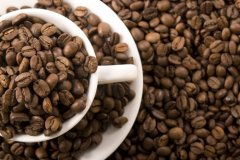
Due to political instability and rampant diseases and insect pests, the coffee industry in Tanzania has been damaged, leading to a decline in the overall level of coffee and instability in quality, which in turn lead to lower prices, which are usually the result of a further decline in the coffee industry. What's more, it is estimated that more than 12% of the Arabica coffee grown in northern Tanzania from 1969 to 1985 was smuggled.
2016-03-30 Tanzania boutique coffee introduction taste flavor due to political instability plus -
Introduction of Guatemalan Fine Coffee quality Guatemalan Coffee Taste

Guatemala Antigua Coffee is not only smooth, high hardness, good quality, more full-bodied and sour and sweet perfect match, coupled with a trace of smoke, but also emphasizes its deep and mysterious. Guatemala is located in the center of North and South America, and its geographical location occupies an important position in Central America. Guatemala covers an area of about 108899 square kilometers. The territorial characteristics can be divided into: plateau volcanoes,
2016-03-30 Guatemala boutique coffee introduction quality taste flavor Antioch -
Introduction to boutique coffee-- Arabica coffee bean Arabica coffee bean flavor Arabica

What is Arabica coffee beans? Arabica coffee beans are also one of the coffee beans, but account for 70% and 80% of coffee bean production. It can be seen that Arabica coffee beans are the main source of raw materials for coffee. So what is Arakabi? What kind of nutrition does it have? What's the use? How does it make coffee? What if I eat expired Arabica coffee beans?
2016-03-30 Boutique coffee introduction rabbi coffee beans flavor what is it -
The origin of Yunnan small grain coffee where does Yunnan small grain coffee come from? Yunnan small granule coffee
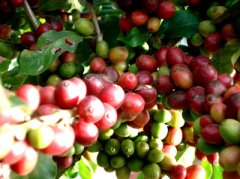
Small-grain coffee is suitable for growing in the mountains at an altitude of 800 to 1800 meters. If the altitude is too high, it will taste sour, and if it is too low, it will taste bitter. Small grains of coffee are mostly planted in dry and hot valleys at an altitude of 1100 meters above sea level, so they are moderately sour, rich and mellow. There is a unique environment suitable for the growth of small seed coffee in many areas of Yunnan, and the quality of small seed coffee is excellent. The planting area is mainly distributed in the
2016-03-30 Yunnan small grains coffee origin introduction from those places -
Introduction of Guatemalan Fine Coffee introduction to Guatemalan Coffee producing areas

Guatemala is a famous producer of high-quality Arabica coffee in Central America. Coffee from five volcanic and three non-volcanic producing areas is very unique and enjoys a high reputation in the international market. Mr. EduardoAmbrocio of the Guatemalan Coffee Company introduced Guatemalan coffee to the audience at the SCAA Houston show in April 2010. 1. Alcatraguo Valley (AcatenangoValley)
2016-03-30 Guatemala boutique coffee introduction producing area profile taste Central America
